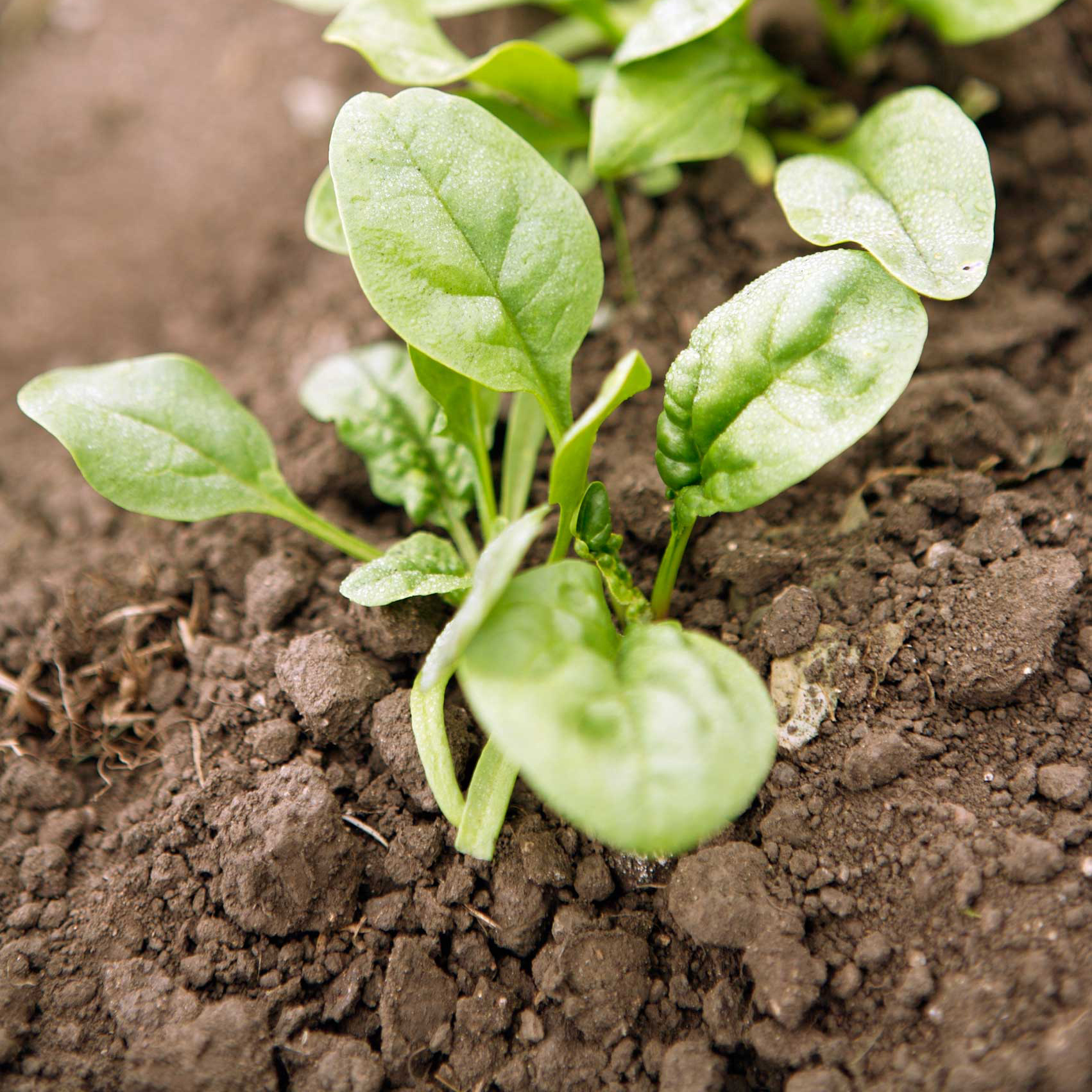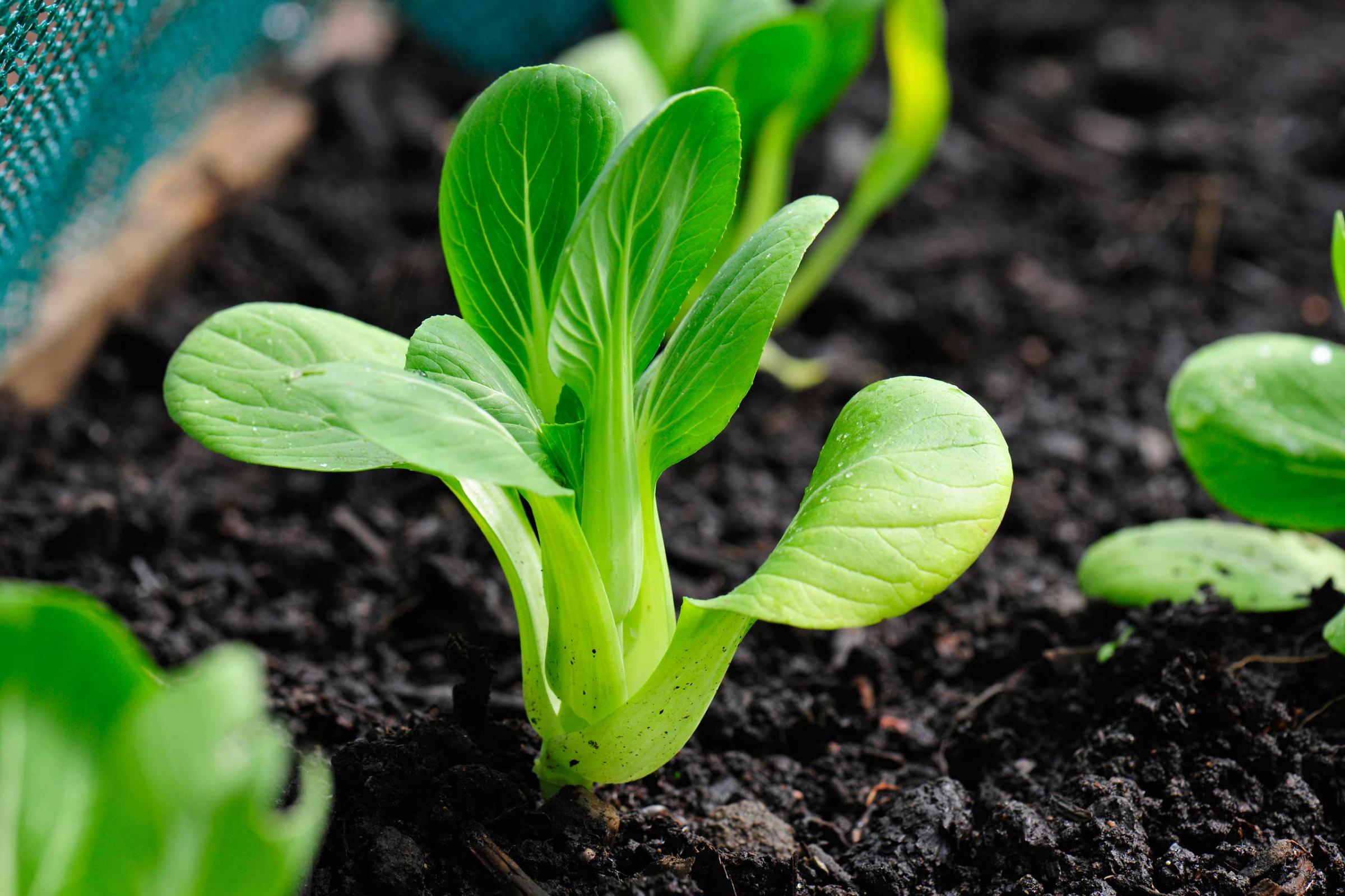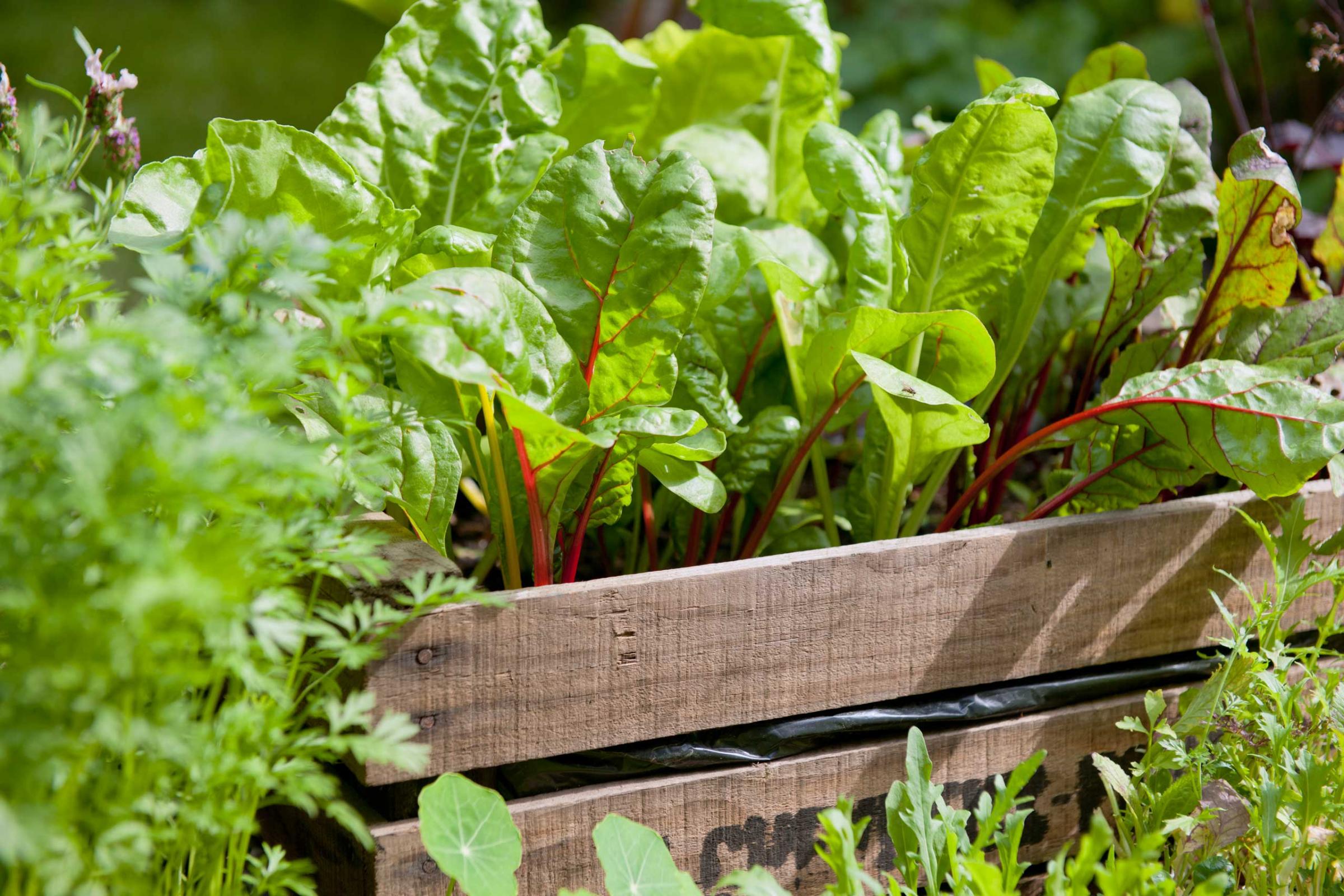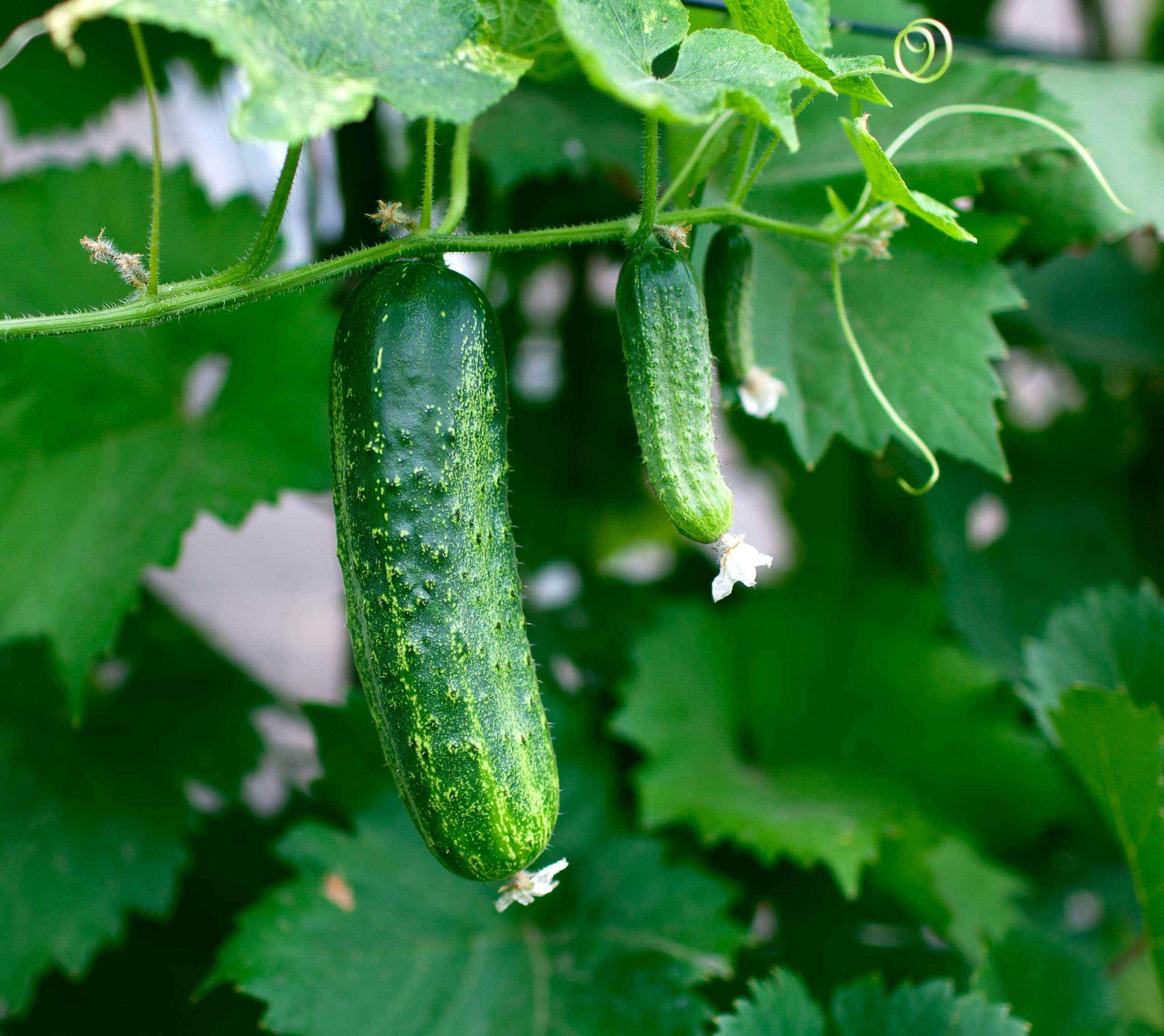Early spring is a great time to start a garden, even if you’ve never planted a single seed before. Not only can cool-weather gardening result in sweeter vegetables, there are other benefits, too. Growing your own food means you’re eating produce when it’s most nutrient-dense, since foods can lose some of their nutritiousness after they’re harvested. “And the fact that you have grown food yourself changes everything,” says Matthew Benson, author of Growing Beautiful Food and farmer of Stonegate Farm in New York. “You have a back story about your food.”

Benson recommends starting simple, taking it slow and not being obsessed with perfection. “Things are going to fail. You are going to get fungi and insects. It’s going to perplex you,” says Benson. But with easy tips and a dose of enthusiasm, Benson says you could have a garden in just a few weeks.
Here, click though for 10 foods even beginners can grow.
MORE: The 50 Healthiest Foods of All Time
(Some basics: For all the veggies recommended you will likely need around eight to 10 inches of soil. If you’re not planting in your backyard, but say, a rooftop, Benson recommends a mix of soil with peat moss, perlite and vermiculite. Also, a lot of planting timing goes based on frost dates, so be sure to look them up before you start. Try here or here.)
Spinach

Benson recommends first-time gardeners start by planting a bed of loose leaf lettuce. After just three weeks, your greens will be ready to harvest. Go for spinach, arugula, mustard greens, mizuna or asian greens. “You can literally go out with a scissors and sort of give a portion of the bed a haircut, put it in a basket and two weeks later and that section you just harvested will have re-grown,” says Benson. “That’s really a thrill to be able harvest your own salad.”
Growing your own greens also has health benefits. Lettuce can lose about half its nutrient value in just 48 hours after its been picked, Benson says. “If you are getting a salad and it’s coming 2,000 miles away, it’s basically just chlorophyll.”
How to grow spinach (and other loose leaf lettuce): Make sure your spinach seeds get both sun and some afternoon shade. Plant spinach early spring when it’s still cool. Keep seeds at least 2 inches apart, planted 1/2 inch deep in the soil. At three to five weeks, you can start cutting leaves for your salad. They will continue to grow, even with the trimming.
Edible Flowers

Edible flowers like nasturium are a simple and tasty addition to a garden.
“There are varieties of nasturtium that are deep dark blood purple and there are varieties that are orange streaked with yellow,” says Benson. “A nasturtium tastes something like a floral version of arugula. It has this intense heat to it.”
How to grow nasturtium: Nasturium does well in the sun, but in the summer it needs a little shade if it’s very hot. The best time to plant is two weeks before the last spring frost. The seeds should be covered in 1/4 to 1/2 inches of soil. They can also be grown indoors in pots. It will take about one to two weeks until you start to see the flowers. Simply snip off the flowers and petals for eating.
Herbs

Every new gardener should start out with some simple herbs like basil, chives, cilantro, parsley, thyme and dill. They require very little space and can make all the difference in a meal.
“Cities have certain things you have to deal with, and finding a place to grow is one of them,” says Benson. “Even if you take a little of your fireplace or rooftop or windowsill, that’s enough—grow some herbs.”
Herbs can be expensive to buy in the store, but they’re cheap and simple to grow. Benson likes to grow several varieties of basil.
How to grow basil: Basil likes the sun, and grows easily in warm temperatures. Benson recommends planting basil seeds one to two weeks after the last spring frost. The seeds can be planted 1/8 inches deep and at least 10 inches apart. Snip off the leaves during the season to encourage more leaves.
Bok Choy

Bok choy is a veggie high in antioxidants and vitamin A, and depending on the variety, it can add some color to your plate. Some bok choy varieties can have deep purple leaves.
How to grow bok choy: Bok choy grows well in the spring sun, and in light shade during the summer heat. The best time to plant is early spring through midsummer and bok choy seeds should be planted eight to 10 inches apart, with about 1/4 inch of soil coverage. Once the plant reaches about three inches, you can start cutting small leaves for eating, or cut the entire head for a one-time harvest.
Kale

Leafy greens like kale are good for gardeners since they can grow all season long.
“I know some people don’t get the whole kale craze, but it has the highest nutrient and protein density of any green,” says Benson. “When it’s cold, their cell structure takes the starches that are in them and converts them to sugar as a kind of protective response to cold weather. After a few frosts, your kale actually gets sweet. It’s programmed to last as long as it can.”
How to grow kale: Kale does well in the sun, but also in cool temperatures. Plant the seeds in your garden around three to four weeks before the last frost, 1/4 inches deep in the soil. About a month after planting you can start harvesting your kale. Snip the leaves near the bottom of the plant first or the baby leaves near the crown.
Rainbow Chard

Chard is a colorful leafy addition to a garden and can reach up to two feet tall with bright red stems.
Growing chard yourself is a good idea since this veggie is not known to ship well and finding it in good quality in a grocery store can be difficult.
How to grow chard: Chard does well in the sun and in cool temperatures. The seeds should be planted 1/2 deep one to two inches apart. The best time to grow chard is around the last frost of spring. You can harvest your chard once the plant is about six to eight inches tall.
Cherry Tomatoes

Tomatoes are easy to grow, and cherry tomatoes are a good place to start. Regular tomatoes can be “prima donnas,” according to Benson. They do well is very specific temperatures which can be tricky for gardening newbies to navigate. Cherry tomatoes on the other hand are a cinch. “Home grown tomatoes are better than what you get in the store,” says Benson. “Home grown fruit is not laced with fertilizers and pesticides. Fruit really gets hammered with that stuff.”
How to grow cherry tomatoes: Find a sunny spot for tomato seeds and make sure there is deep soil for their roots. As they start to grow, tie them to a supporting stick or tomato cage. You can start picking them when they change color.
Cucumber

Cucumbers grow easily in warm conditions and Benson says once you start growing cucumbers it’s hard to go back to buying them at the grocery store.
How to grow cucumbers: Make sure soil is warm when planting cucumber seeds. Plant them at least one week after the last frost around one to two inches deep in small hills of soil that are a few inches high. Keep them around two feet apart. Use a trellis to allow the cucumber plants to grow upwards. Once cucumbers reach full size, start harvesting them each day.
Peas

Snap peas also grow easily. “You want to be as vertical as you can when you’re growing in a small space,” says Benson. And peas fit that bill.
How to grow snap peas: Plant seeds in the early spring about four to six weeks before the last spring frost. Benson recommends planting them 1/2 to one inch deep and four to six inches apart. Snap peas will grow into tall, lanky vines, and it’s a good idea to tie them to a small trellis for support. You can pick the peas when they are bright green and plump.
Carrots

Carrots will always be a garden mainstay, and though root vegetables may seem more intimidating, new gardeners can find them worthwhile and easier than expected.
“We know less about what’s going on under our feet than we do what goes on up in the cosmos,” says Benson. “It’s so mysterious, all of these interesting relationships between roots and rhizomes and microbes and all these cellular chatter that goes on in the dirt.” Pulling veggies from the soil can be very satisfying for a first time farmer.
How to grow carrots: Carrot seeds should be covered with around 1/4 to 1/2 inches of soil about two to three inches apart, and should be planted two to three weeks before the last spring frost date. Keep the soil moist. Seeds can take around three weeks to start to sprout. Depending on the variety, carrots are typically ready to harvest after 46 to 65 days.
More Must-Reads from TIME
- Donald Trump Is TIME's 2024 Person of the Year
- Why We Chose Trump as Person of the Year
- Is Intermittent Fasting Good or Bad for You?
- The 100 Must-Read Books of 2024
- The 20 Best Christmas TV Episodes
- Column: If Optimism Feels Ridiculous Now, Try Hope
- The Future of Climate Action Is Trade Policy
- Merle Bombardieri Is Helping People Make the Baby Decision
Contact us at letters@time.com